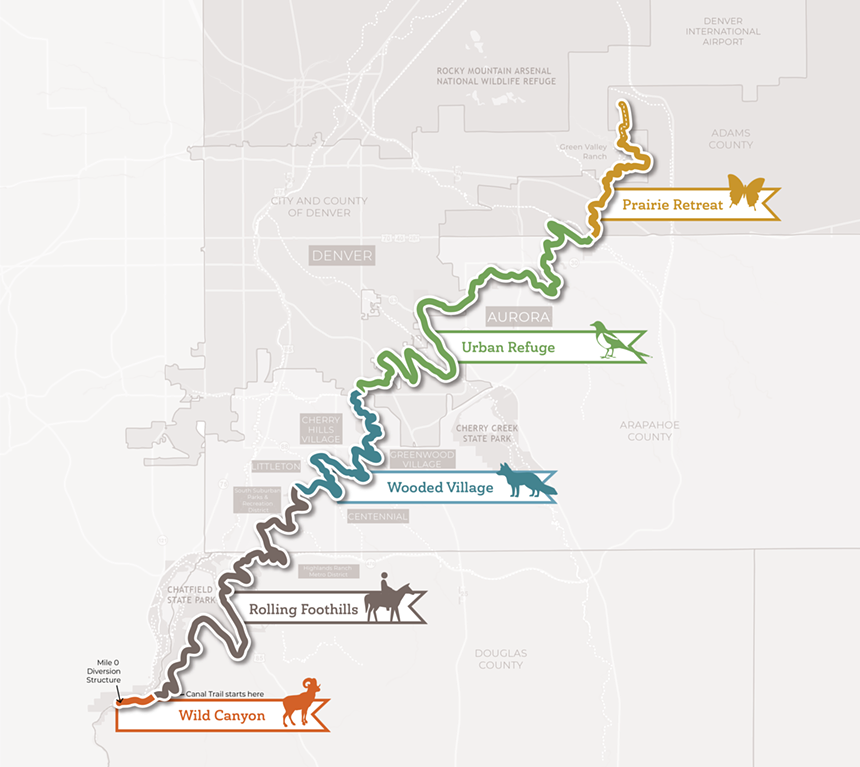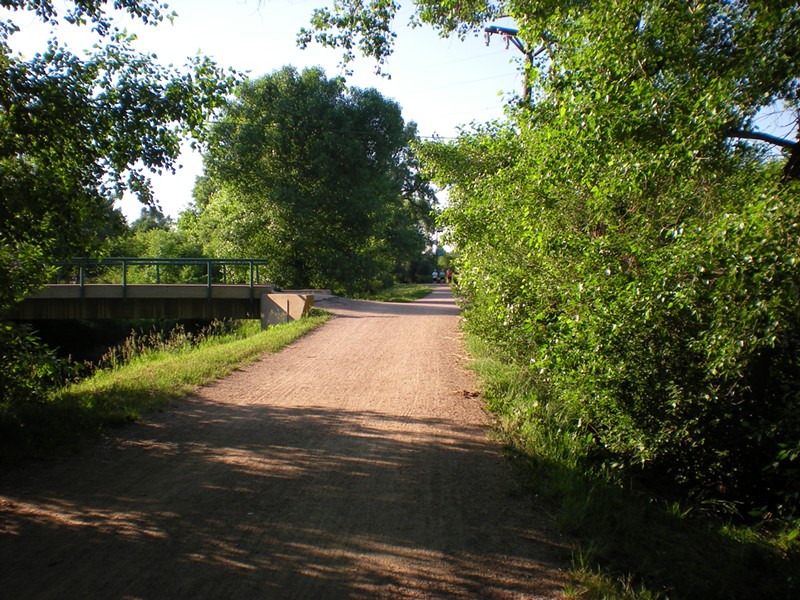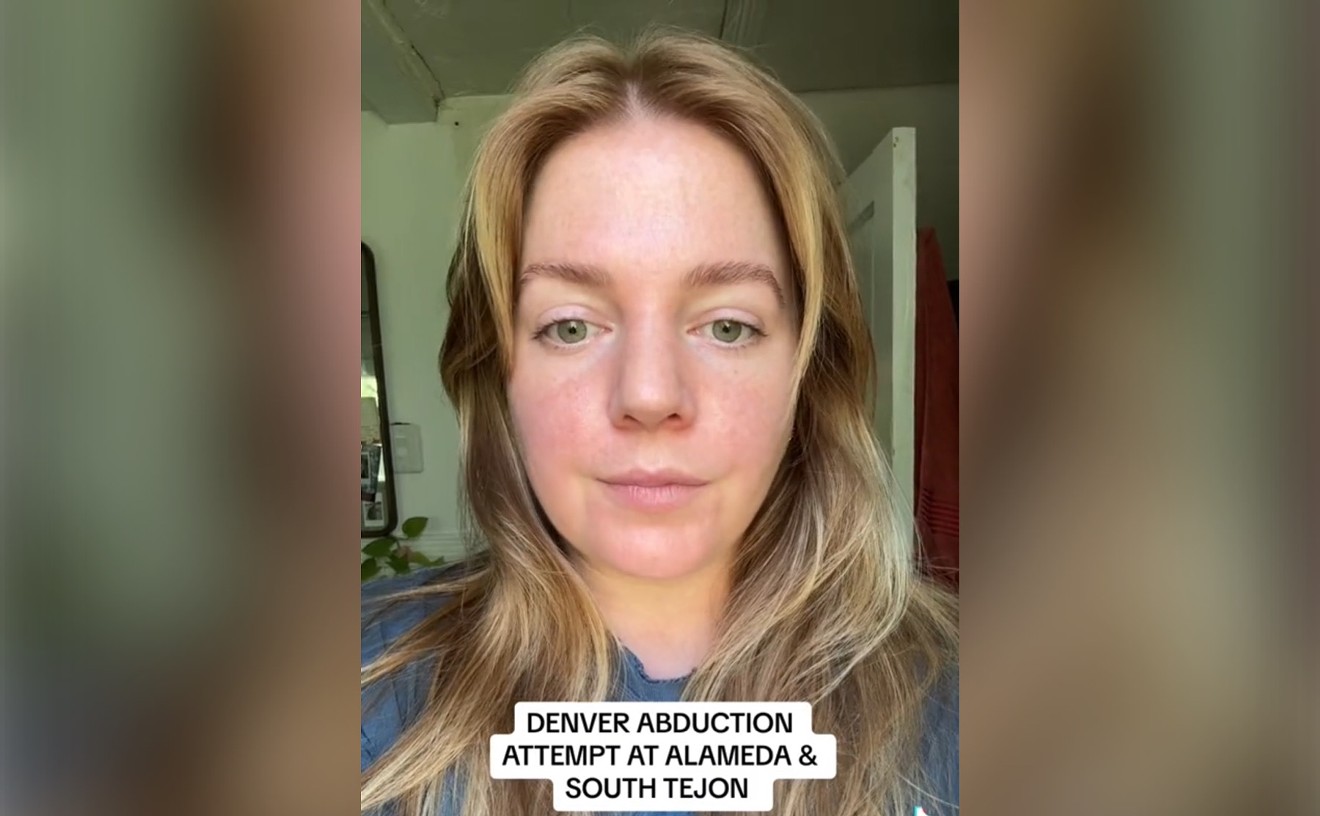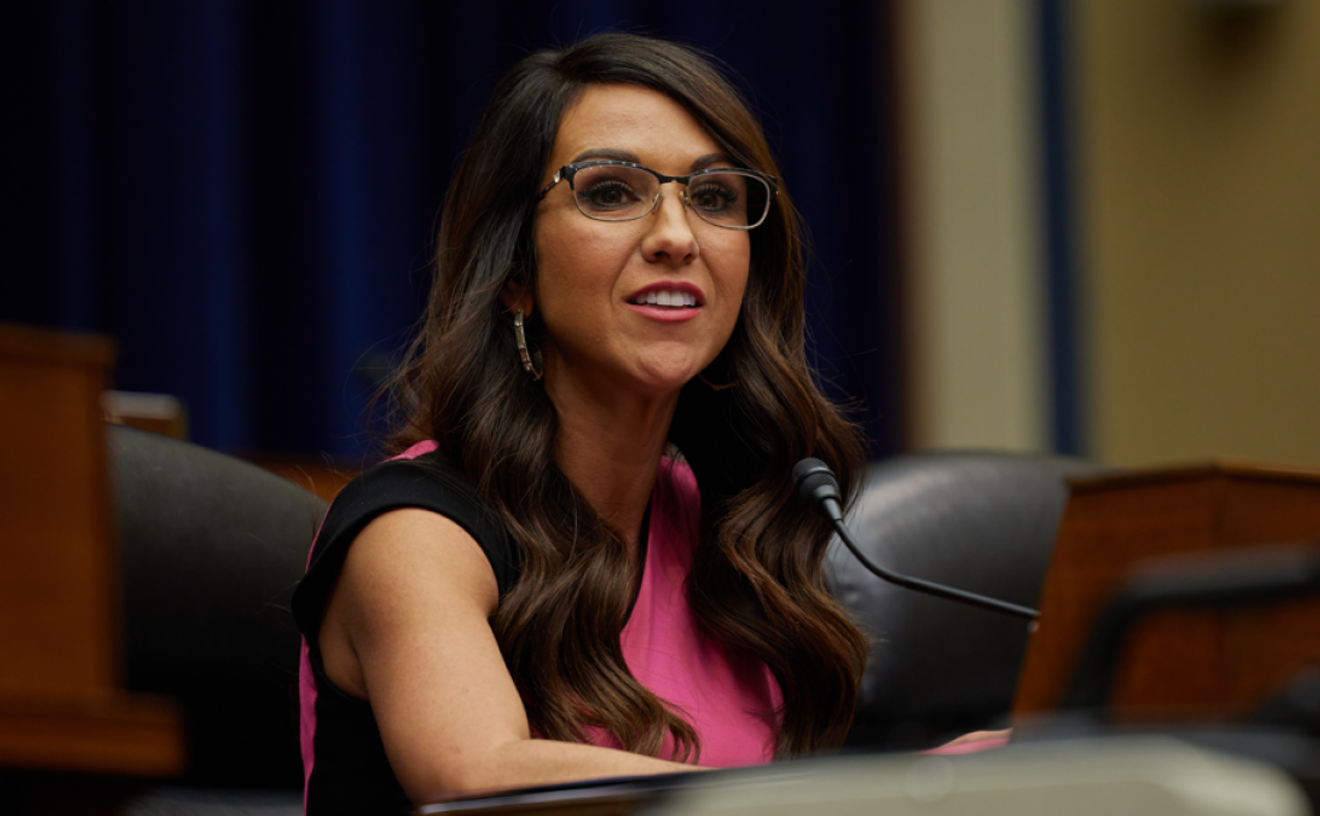Denver Water and Arapahoe County officials announced the transfer of 45 miles of the canal during a press conference on Thursday, June 20, at the Little Dry Creek Trail, near the High Line Canal Conservancy offices in Centennial. Tom Roode, chief operations and maintenance officer at Denver Water, tells Westword that Arapahoe County is better suited to steward the High Line Canal and its trail, which attracts more than a million visitors per year.
Denver Water acquired the High Line Canal in 1924, when it was still mostly used for irrigation. Now that it's almost entirely used for recreation, operating the canal doesn't fit with Denver Water's mission of keeping the metro area hydrated, Roode says.
"We're a long-range, forever institution that needs to provide water to the metro area," he says. "The county really becomes this better agency, because they have both stormwater functions and recreation functions and maintenance funding sources that can better care for it. Our charter and our mission is pretty direct that we're a water provider to the citizens."
The High Line Canal starts at the Waterton Canyon and travels 71 miles to Rocky Mountain Arsenal National Wildlife Refuge. Although Arapahoe County will own 45 miles of the trail, Denver Water still holds twenty miles of the canal, and the City of Denver owns a stretch through Green Valley Ranch that was bought in the ’90s.

Denver Water and Arapahoe County announced the transfer of 45 miles of the High Line Canal on Thursday, June 20, outside the High Line Canal Conservancy offices.
Bennito L. Kelty
The High Line Canal was the idea of Benjamin Harrison Eaton, an entrepreneur and, later, governor of Colorado. In 1876, Eaton partnered with James Duff, a Scottish entrepreneur who came to Colorado to find investment opportunities for eager English investors. Eaton found the workforce to build the canal, and engineer Edwin Nettleton designed it.
The High Line Canal would redirect water from the South Platte River near Waterton Canyon and into the south and northeast of Denver, a budding gold miner's town at the time.
When Duff and Eaton set out to build the 71-mile canal, they knew it would be the longest canal in Colorado at the time. Eaton decided the best way to do it was to use gravity instead of relying on pumps, which could be expensive to maintain.
"That's why it meanders," Roode says. "They had to find the gravity lines so it wouldn't go down too fast and not go uphill, but it flows by gravity all the way out to the airport."
After a Colorado Supreme Court decision in 1913 allowed the City of Denver to own its long-term water sources, the city's Public Utilities Commission began looking into a recommendation by a Los Angeles consultant to buy the High Line Canal. The City of Denver acquired ownership of the full 71-mile canal in 1924 before transferring it to Denver Water, which was formed in 1918.
Denver Water maintained the canal and continued to supply water to farmlands built alongside it. However, as the corridor alongside the canal became more urban, Roode says Denver Water began looking at turning it into a recreational trail because it was losing its farming customers.
The canal was never very efficient at delivering water to farmers anyway, Roode notes. Denver Water would lose 70 to 80 percent of the water it put into the canal through seepage and evaporation before it ever got to any farmland.
"We always knew — back in the ’60s — that it wouldn't serve forever as an irrigation ditch. It just wasn't sustainable," Roode says.

The High Line Canal stretches for 71 miles, from Waterton Canyon to the Rocky Mountain Arsenal National Wildlife Refuge.
High Line Canal
Today, the High Line Canal is almost entirely used for its recreation trail, which passes through eleven jurisdictions: Douglas County, Highlands Ranch, Littleton, Centennial, Greenwood Village, Cherry Hills Village, Denver, Arapahoe County and Aurora.
According to Roode, the canal played a key role in developing all those areas. Even if the output wasn't great, he says, "it did spur some big development of the whole metro area from Waterton Canyon to DIA."
The canal also acts as a stormwater drainage system, and the plants that grow in the canal filter out pollutants like dirt, sediment and fertilizer from stormwater before it empties into reservoirs, Roode says.
The High Line Canal Conservancy is now working on raising $33 million through the "Great Lengths for High Line" campaign. It will combine that money with $67 million secured from local, state and federal governments for the next five years.
The conservancy will use the $100 million in total funding to build gathering spots, play areas, pedestrian bridges, smoother surfaces for better accessibility, signs, bathrooms, parking spaces, shade structures, parks and play areas in about twenty different sections of the canal, according to a project map.
Arapahoe County has already spent more than $11 million maintaining and improving the High Line Canal trail. Denver Water has put $10 million into a fund supporting the trail's future stewards, Roode says.
"We've really done a good job shepherding it to where it is today," he concludes. "Now we're handing it off to Arapahoe and the conservancy so they can make it even better."












